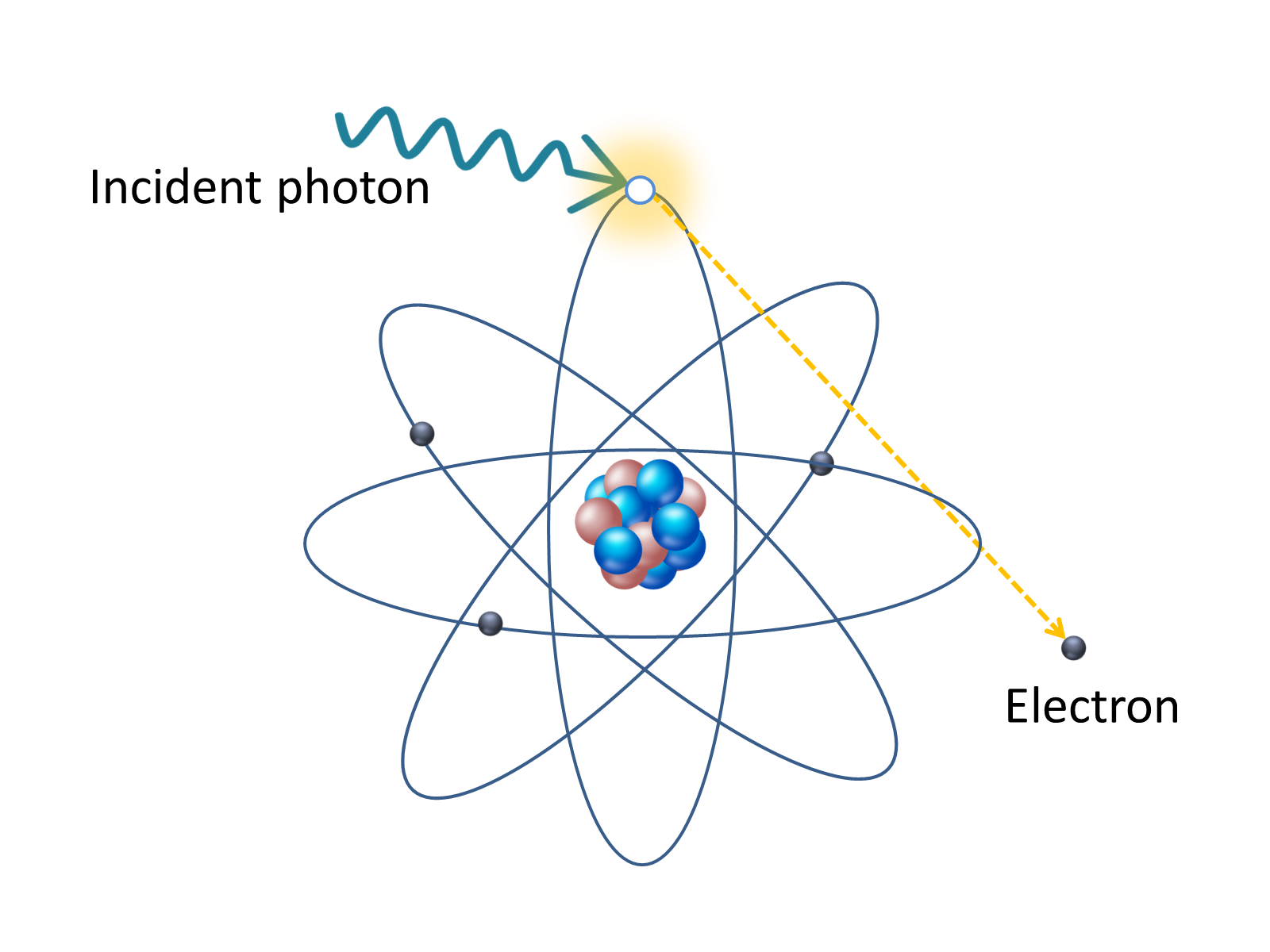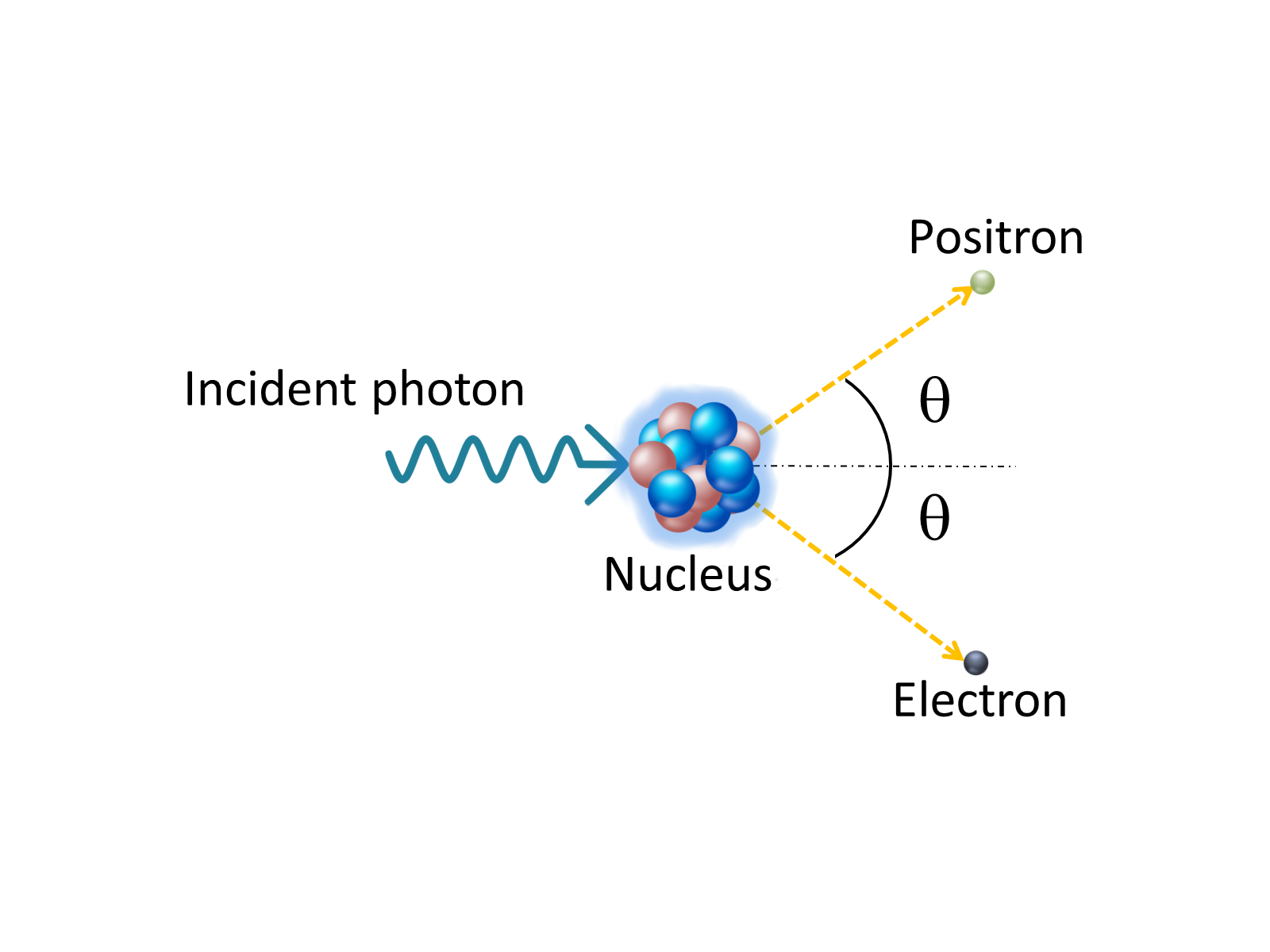OCR Specification focus:
‘Describe simple scatter, photoelectric effect, Compton scattering, and pair production as attenuation mechanisms.’
X-ray attenuation mechanisms describe how X-ray photons interact with matter, reducing beam intensity through scattering or absorption. Understanding these processes is essential for interpreting medical imaging quality and patient dose.
X-ray Attenuation Mechanisms
X-ray attenuation refers to the reduction in the number of photons passing through a material due to interactions with atoms. These interactions depend on the photon energy, atomic number of the material, and density, each influencing how the beam weakens as it penetrates tissue.
Simple Scatter
Simple scatter is one of the lowest-energy interaction mechanisms and is relevant when incoming X-ray photons have comparatively small energies.
Nature of Simple Scatter
At low photon energies, an X-ray photon interacts with an atom without transferring enough energy to eject an electron. Instead, the photon changes direction with little or no energy loss. This scattered photon contributes to image noise by reaching the detector from an unintended angle.
Simple Scatter: Interaction in which a low-energy X-ray photon is deflected by an atom without ionising it and with minimal energy loss.
Low-energy photons undergoing this process rarely contribute useful information in diagnostic imaging, and appropriate beam filtration reduces their presence. The propensity for simple scatter decreases significantly as photon energy increases.
Effects on Diagnostic Imaging
• Increased background intensity on the detector
• Reduced image contrast
• Potential blurring of edges and fine structures
Photoelectric Effect
The photoelectric effect dominates when photon energies are only slightly above the binding energy of inner-shell electrons, particularly in elements with high atomic number such as bone.
Mechanism of the Photoelectric Effect
A photon is completely absorbed by an atom, transferring all of its energy to a tightly bound inner-shell electron. This ejects the electron and leaves a vacancy in the shell.

Diagram of the photoelectric effect showing an incident photon absorbed by an inner-shell electron, which is then ejected as a photoelectron. The photon disappears completely, transferring all its energy. The mechanism is identical for medical X-ray photons, though the image is drawn for γ-rays. Source.
Photoelectric Effect: Complete absorption of an X-ray photon by an atom, causing ejection of an inner-shell electron.
A higher-shell electron subsequently falls into the vacancy, releasing characteristic radiation. Because absorption is total, the photoelectric effect is essential for generating the contrast between soft tissue and bone.
Key Features
• Occurs more often in high-Z materials
• Provides strong contrast essential for radiography
• More common with low- to mid-energy diagnostic photons
Compton Scattering
Compton scattering occurs across a broad range of photon energies and is the primary source of scatter in most diagnostic situations involving soft tissue.
Physics of Compton Scattering
A moderately energetic photon collides with a loosely bound outer-shell electron, transferring part of its energy to the electron. The electron is ejected, and the photon continues in a new direction with reduced energy.
Compton Scattering: Interaction where an X-ray photon transfers part of its energy to an outer-shell electron, producing a scattered, lower-energy photon.
This mechanism is particularly important because it degrades image contrast while increasing patient dose.
Consequences for Imaging
• Strong contributor to scatter reaching the detector
• Reduced contrast across soft tissue regions
• Requires strategies such as anti-scatter grids to minimise impact
Pair Production
Although included within the specification, pair production occurs at photon energies far above those used in diagnostic X-ray imaging.
Conditions for Pair Production
For pair production to occur, a photon must possess a minimum energy of 1.02 MeV, equivalent to the combined rest-mass energy of an electron and a positron. Diagnostic photons are typically in the range of tens to hundreds of keV, so the process is absent in standard radiography.

Diagram of pair production, in which a high-energy photon interacts with the electric field of a nucleus to form an electron and a positron. The original photon is fully absorbed, illustrating complete attenuation. The diagram includes a hint of positron annihilation, which is extra detail beyond the syllabus but conceptually helpful. Source.
Pair Production: Interaction where a high-energy photon creates an electron–positron pair when passing near a nucleus.
Even though it does not occur in medical X-ray imaging, it is studied to understand the full spectrum of photon–matter interactions relevant to higher-energy radiation fields.
Significance in the Context of Attenuation
• Not relevant to diagnostic energy ranges
• Included for conceptual completeness
• Dominant only in high-energy gamma-ray environments
Comparative Importance in Medical Imaging
Different attenuation mechanisms dominate depending on the energy spectrum of the X-ray beam and the tissues involved. In soft tissue imaging, Compton scattering is the primary interaction, while the photoelectric effect is crucial in determining contrast between different tissue types. Simple scatter affects low-energy photons and is reduced through filtration, and pair production is not encountered in clinical X-ray practice.
Summary of Mechanism Characteristics
• Simple scatter: low energy, minimal energy transfer, reduces sharpness
• Photoelectric effect: absorption, high contrast in high-Z materials
• Compton scattering: major source of scatter in soft tissue
• Pair production: requires energies beyond diagnostic range
FAQ
Materials with a high atomic number have tightly bound inner electrons, increasing the likelihood of the photoelectric effect because photons can interact strongly with these electrons.
In lower-Z materials such as soft tissue, outer electrons are more weakly bound, so Compton scattering becomes more probable.
At very high energies, pair production becomes increasingly likely regardless of atomic number, but these energies exceed those used in diagnostic imaging.
Compton-scattered photons arrive at the detector from incorrect angles, meaning they carry no accurate positional information about the tissue they interacted with.
Because these photons add unwanted background signal, they raise the overall intensity detected without increasing anatomical detail, which reduces contrast.
This is especially problematic in soft tissue imaging, where natural contrast is already low.
Simple scatter is primarily caused by low-energy photons, which are easily removed by placing aluminium filters in the beam path.
These filters preferentially absorb low-energy photons while allowing higher-energy, more penetrating photons to pass.
This reduces patient dose and decreases the contribution of simple scatter to image degradation.
The positron quickly loses energy through interactions with surrounding electrons before annihilating with one of them.
This annihilation produces two gamma photons, each with an energy of 511 keV, emitted in nearly opposite directions.
The original X-ray photon is therefore removed from the beam, meaning attenuation has occurred even though secondary photons are produced.
• At low energies, simple scatter dominates because photons do not have enough energy to eject even loosely bound electrons.
• At moderate diagnostic energies, the photoelectric effect and Compton scattering are most significant. Photoelectric interactions dominate in high-Z materials; Compton dominates in low-Z materials.
• At energies above 1.02 MeV, pair production becomes possible and eventually overtakes the other mechanisms, though this lies outside diagnostic X-ray practice.
Practice Questions
Question 1 (2 marks)
State what happens to an X-ray photon during the photoelectric effect and explain why this interaction is important for producing contrast in medical X-ray images.
Mark scheme
• Photon is completely absorbed by an atom / transfers all its energy to an inner-shell electron (1)
• Leads to strong absorption in high-Z materials such as bone, producing clear contrast with surrounding soft tissue (1)
Question 2 (5 marks)
Describe Compton scattering and pair production as mechanisms for X-ray attenuation. In your answer, compare the energy conditions required for each process and discuss their relevance to diagnostic medical imaging.
Mark scheme
• Compton scattering: photon interacts with a loosely bound outer-shell electron, transferring part of its energy and scattering in a new direction (1)
• Scattered photon has lower energy; recoil electron ejected (1)
• Occurs over a wide range of diagnostic X-ray energies and is the major cause of scatter in soft tissue (1)
• Pair production: photon converts into an electron–positron pair when passing near a nucleus (1)
• Requires photon energy of at least 1.02 MeV, so does not occur in diagnostic imaging (1)

